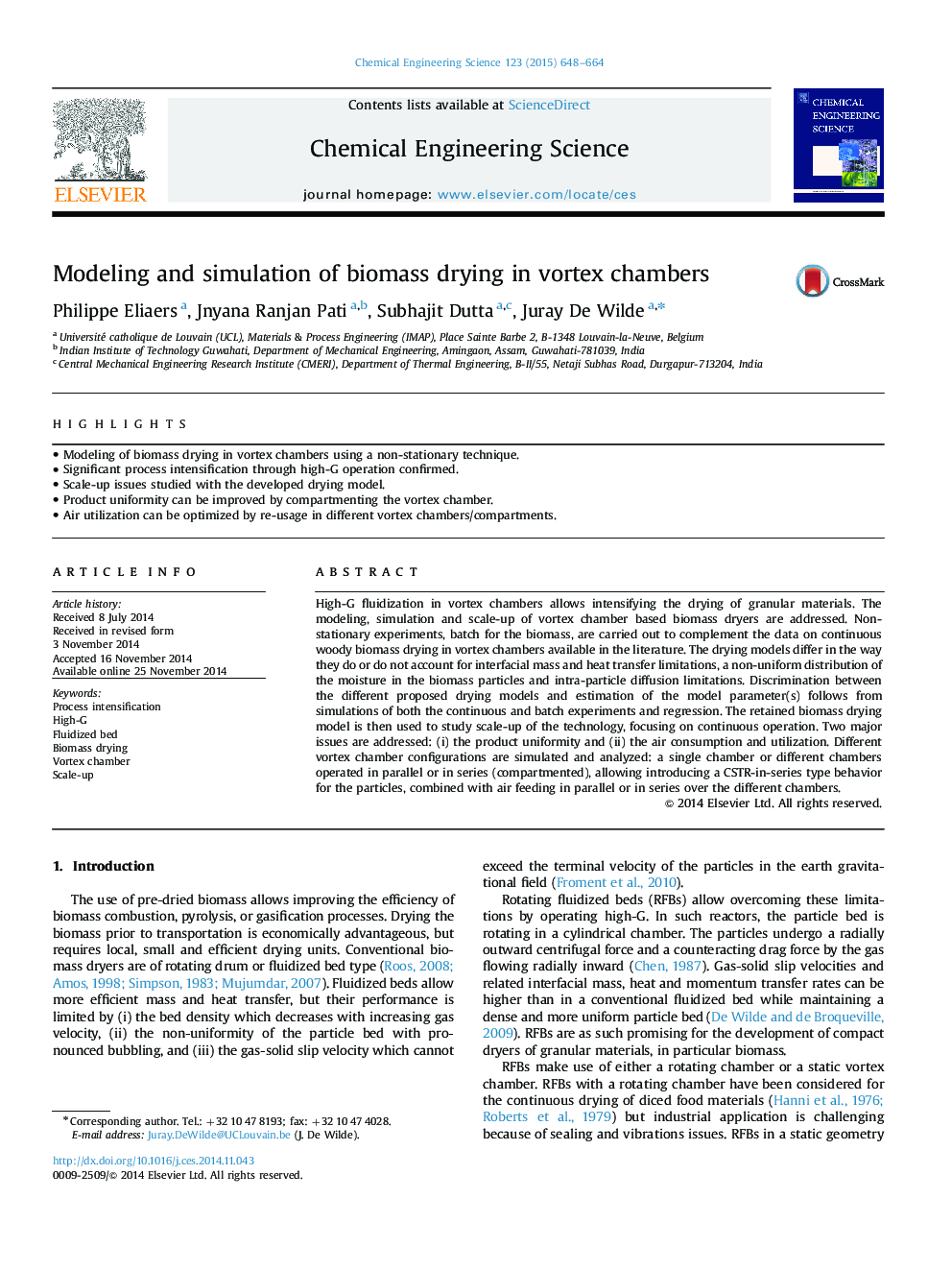| Article ID | Journal | Published Year | Pages | File Type |
|---|---|---|---|---|
| 6590650 | Chemical Engineering Science | 2015 | 17 Pages |
Abstract
High-G fluidization in vortex chambers allows intensifying the drying of granular materials. The modeling, simulation and scale-up of vortex chamber based biomass dryers are addressed. Non-stationary experiments, batch for the biomass, are carried out to complement the data on continuous woody biomass drying in vortex chambers available in the literature. The drying models differ in the way they do or do not account for interfacial mass and heat transfer limitations, a non-uniform distribution of the moisture in the biomass particles and intra-particle diffusion limitations. Discrimination between the different proposed drying models and estimation of the model parameter(s) follows from simulations of both the continuous and batch experiments and regression. The retained biomass drying model is then used to study scale-up of the technology, focusing on continuous operation. Two major issues are addressed: (i) the product uniformity and (ii) the air consumption and utilization. Different vortex chamber configurations are simulated and analyzed: a single chamber or different chambers operated in parallel or in series (compartmented), allowing introducing a CSTR-in-series type behavior for the particles, combined with air feeding in parallel or in series over the different chambers.
Related Topics
Physical Sciences and Engineering
Chemical Engineering
Chemical Engineering (General)
Authors
Philippe Eliaers, Jnyana Ranjan Pati, Subhajit Dutta, Juray De Wilde,
